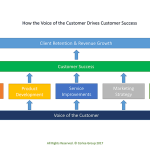Don’t Jump to the End
As salespeople, we often jump to the end — providing a proposal — because we are excited about the opportunity. This can lead to a break in the sales process and losing the opportunity. I was recently reminded of this…

Last week, I heard back from a prospect after over 2 months of following up from our initial meeting.
It started with a referral from a great partner. When my referral partner was talking to this company’s CEO about helping them recruit new sales professionals, it became clear that something more than hiring was needed and the CEO agreed. A new complementary line of services had been created through an acquisition. They had hired a VP specifically for this new line of services to grow the revenue and build out a sales team.
The Meeting
Here is what I discovered: In the first full year of sales, they hit only 1/3 of target and over 30% of the revenue came from existing clients. Everybody loved the Sales VP, but he couldn’t close business. They weren’t sure what to do.
After explaining this to me and establishing a good rapport, the CEO asked for a proposal. He was saying things like, “When you come in…” and “As a matter of fact, I may want you to take a look at the entire sales organization to see what we could be doing better.” I was pretty excited. This opportunity was right in my wheelhouse: helping an organization pivot to stay relevant and figure out how to change the current sales culture to support the change. I could knock this one out of the park.
Radio Silence
After sending the CEO a proposal, I followed up, as agreed, at the end of the following week. No response. I figured he was busy, so I waited until middle of the next week to follow up. No response. I called, I emailed, I offered to stop by in the afternoon, I sent blog posts, invited him to events I thought he would enjoy – I never heard back… until last week. I tried one more time and he responded to let me know they decided to go a different direction. I sent him a note thanking him for letting me know and that I was excited to hear he found someone to help, and that I would stay in touch.
Where Did I Go Wrong?
I got overconfident and did not follow my process. Here is what I should have done:
1) Talked to more people in the organization that were affected by this challenge. I should have explained to him that I needed to understand the issue from their point of view to develop the right approach. This also would have provided the opportunity to deepen relationships across the organization and show expertise to multiple stakeholders.
2) Required a go-live date. I did not get a firm date on when he wanted to start the project. I got excited when he said, “as soon as possible.” But what does that really mean?
3) Paint a picture of what it would take to reach the right decision. Instead of showing him the steps needed to create an ideal solution, I took the easy way out and said I had what I needed.
4) Asked who else they were considering and what were his criteria for selecting a provider? I got caught up in the great meeting and energy we had. I believed that he felt I was the right one for the job, so I never asked that question.
5) Get an exact date and time that we would reconnect and review my approach.
A Common Problem
This frequently happens to sales professionals. We get excited and lose focus. My hope is you don’t just read this and say, “good post Jack.” My hope is you create a tool that has the steps you and your prospect should take written out. Take this to your appointments. Show it to your prospect, and ask for feedback on how you can make it work for his company. Then gain agreement on covering all the steps, because the goal of it is to help both of you make a good decision.
This will separate you from your competition who often, just like I did, fly by the seat of their pants and make assumptions about closing the sale. My goal is to eliminate hope from the equation and lessen the number of deals you have hanging at the end of the pipeline with no decision. It benefits everyone — you and your potential client — to make the right decision.


